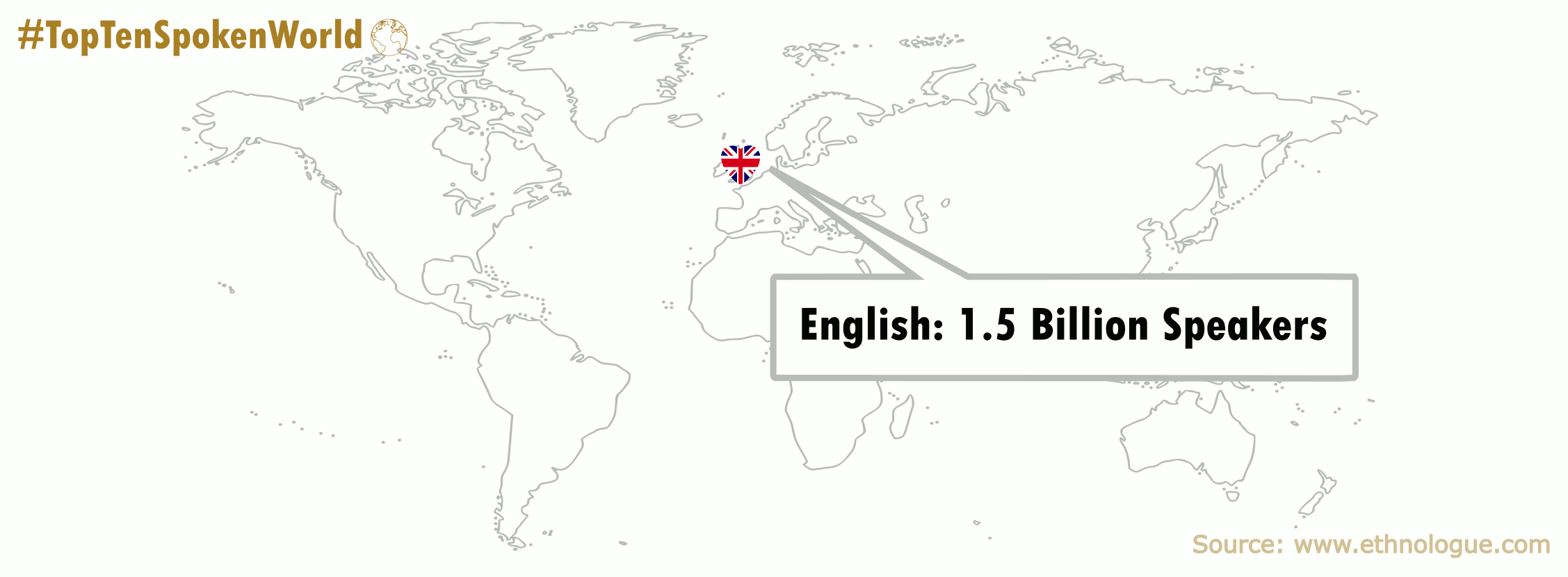Say ¿Qué?: Top Ten Spoken Languages in the World
According to Ethnologue* (and the CIA World Factbook, Britannica, etc.) the top ten most spoken languages (counting native and non-native speakers) in the world are as follows:
English: 1.5 billion speakers (19.6% of the world population of 7.668 billion)(Largest population of English speakers: United States)
Mandarin: 1.1 billion speakers (14.3%)(China)
Hindi: 610 Million speakers (8%)(India)
Spanish: 560 million speakers (7.3%)(Mexico)
French: 310 million speakers (4%)(France)
Arabic: 274 million speakers (3.6%)(Egypt)
Bengali: 273 million speakers (3.6%)(Bengladesh)
Portuguese: 264 million speakers (3.4%)(Brazil)
Russian: 255 million speakers (3.3%)(Russia)
Urdu: 232 million speakers (3.0%)(Pakistan)
We added Swahili as an honorable mention with an estimated 200+ million speakers (2.6%)(Tanzania) according to the World Economic Forum. As HUGE fans of The Lion King on Broadway, we’d like to share some Swahili words from the beloved musical:
Simba: Lion
Rafiki: Friend
Nala: Gift
Sarabi: Mirage
Pumbaa: Foolish
Hakuna Matata: No worries
Asante Sana: Thank you very much
Say ¿Qué? Multi-Language Design Series
How do you say [<♡>] in your language? To become a true polyglot, one must be proficient in four or more languages! Our Say ¿Qué? designs feature eleven languages! We started with translations of hello, goodbye, mom, dad and thank you and expanded to words centered on community as well as a baby’s first words.
When translating “hello,” it was less about exact translations and more about learning how people greet each other. There were formal and informal ways of greeting others, depending on one’s familiarity. Often it was more than just a “hello” but an inquiry into their well-being or wishing them well.
#TopTenSpokenWorld
Hello
Nǐ hǎo (你好) [Mandarin]
Namaste (नमस्ते) [Hindi]
Hola [Spanish]
Bonjour [French]
Alsalam ealaykum (السلام عليكم) [Arabic]
Namaskāra (নমস্কার) [Bengali]
Olá [Portuguese]
Zdravstvuyte (Zdravstvuyte) [Russian]
Salam alaikum (ہیلو) [Urdu]
Habari [Swahili]
If we learn to say hello in the top ten most spoken languages, we could personally greet more than half of the world!
Each Say ¿Qué? design includes a heart-flag of the country with the largest population of a particular language. For #TopTenSpokenWorld, we included Portugal’s flag for Portuguese (in place of Brazil) and Spain’s flag for Spanish (in place of Mexico) for clarity. Flags also vary depending on the region featured in the particular design. For example #TopTenSpokenUSA, #TopTenSpokenEurope feature flags more recognizable in their respective regions.
We strive to build solidarity through the art of translation. If you have suggestions to help us improve our translations, please let us know via connect@villagevalues.org or our form.
Thank you [Xièxiè (谢谢), Dhanyavaad (धन्यवाद), Gracias, Merci, Shkran lak (شكرًا لك), Dhan'yabāda (ধন্যবাদ), Obrigado, Spasibo (Спасибо), Shukriya (شکریہ), Asante) for reading!
*Eberhard, David M., Gary F. Simons, and Charles D. Fennig (eds.). 2024. Ethnologue: Languages of the World. Twenty-seventh edition. Dallas, Texas: SIL International. Online version: http://www.ethnologue.com.


































